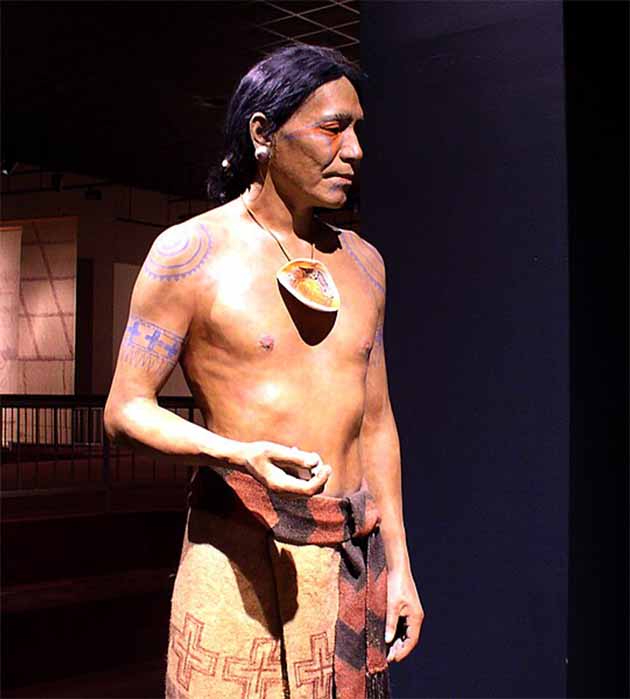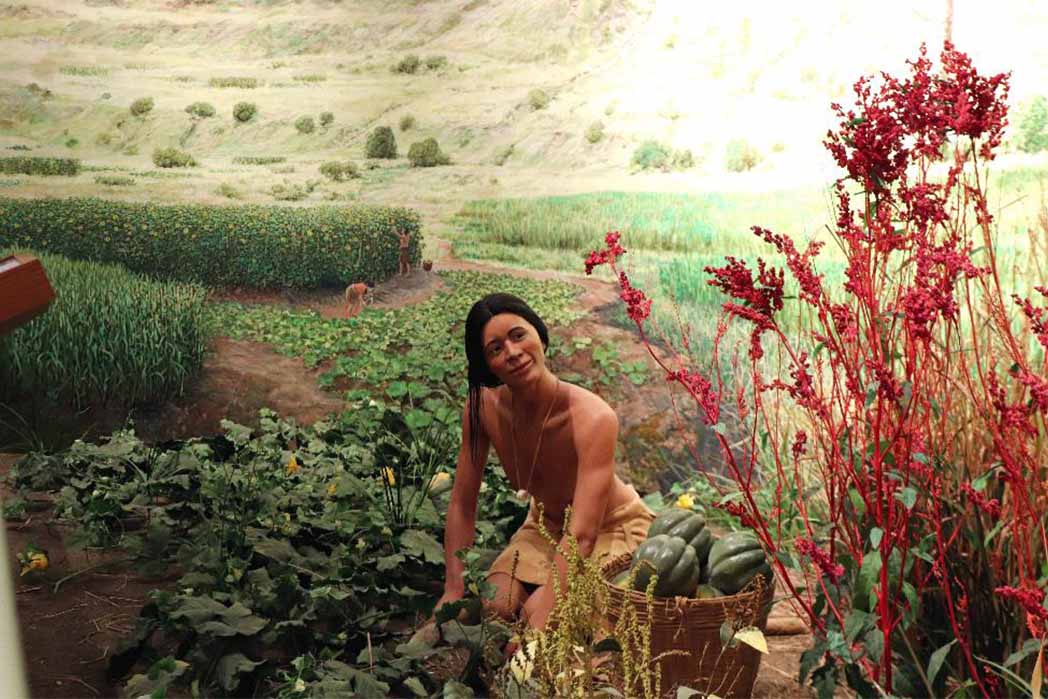
Cahokia: The Rise and Fall of an Indigenous Empire
Cahokia City Center, Spring of 1054
A young Indigenous man, a Pilgrim, has been walking all day carrying a large bundle basket on his back. His long black hair is tied up in a bun at the back of his head, and he has new, round, purplish, flint clay spools in his ears. The young man’s body is taught, lean, and muscular, and a simple red loincloth is draped around his waist and through his legs, with the tail of the cloth flowing behind him.
This Pilgrim is journeying into the ceremonial city center of Cahokia from his new farming home community a couple of days walking distance away. The Pilgrim’s whole family, clan, and tribe had heard the great stories of the Cahokian Empire and had left their former homelands, much farther away, to see if the stories about Cahokia were indeed true. They had found a place in one of the suburban farming collectives that paid tribute crops to Cahokia.

A diorama showing a Mississippian culture elite personage from the Cahokia site in Collinsville, Illinois. The figure wears a cloth skirt and sash, an engraved shell gorget, ear spools, and a falcon eye design painted on his face. (Herb Roe / CC BY-SA 3.0)
The stories about Cahokia are everywhere. Stories about more people gathering here than anyone could ever imagine, in a large “city,” where work was done for the greater good of the city itself. Not just people living closely, but living in a new manner, for something greater than themselves.
As the Pilgrim moves closer to the city center, he passes many Indigenous women working the fields of corn, beans, and squash. All around him is a vast floodplain, stretching for miles and miles. High along the bluffs framing the floodplain, the Pilgrim sees low burial mounds, thatch-roofed buildings with burial scaffolds, perhaps open so the dead can see the heavens. The floodplain is filled with marshy lowlands, and he passes by thousands of cattails, watercress, and duckweeds.

As the Pilgrim moves closer to the city center, he passes Indigenous women working the fields. (Thank You (24 Millions) / CC BY 2.0)
As the Pilgrim moves closer to the city center, the marshlands and crop fields give way to open plazas and well-trodden paths, and he sees the larger, angular, flat-topped ceremonial mounds rising out of the landscape, and smoke trails emanating from larger thatched artifices.




